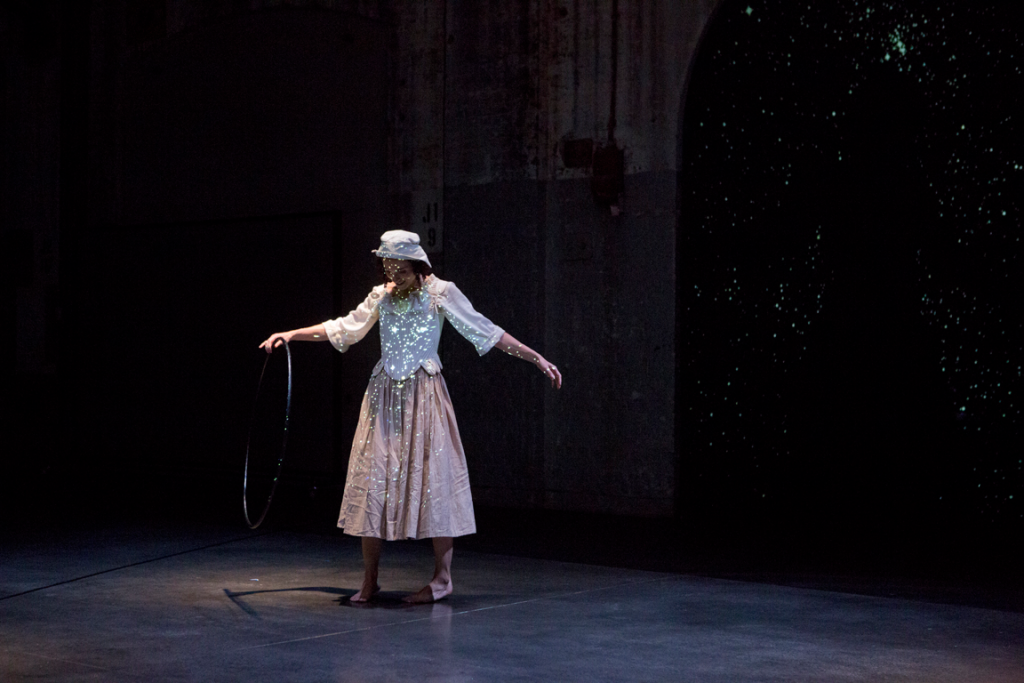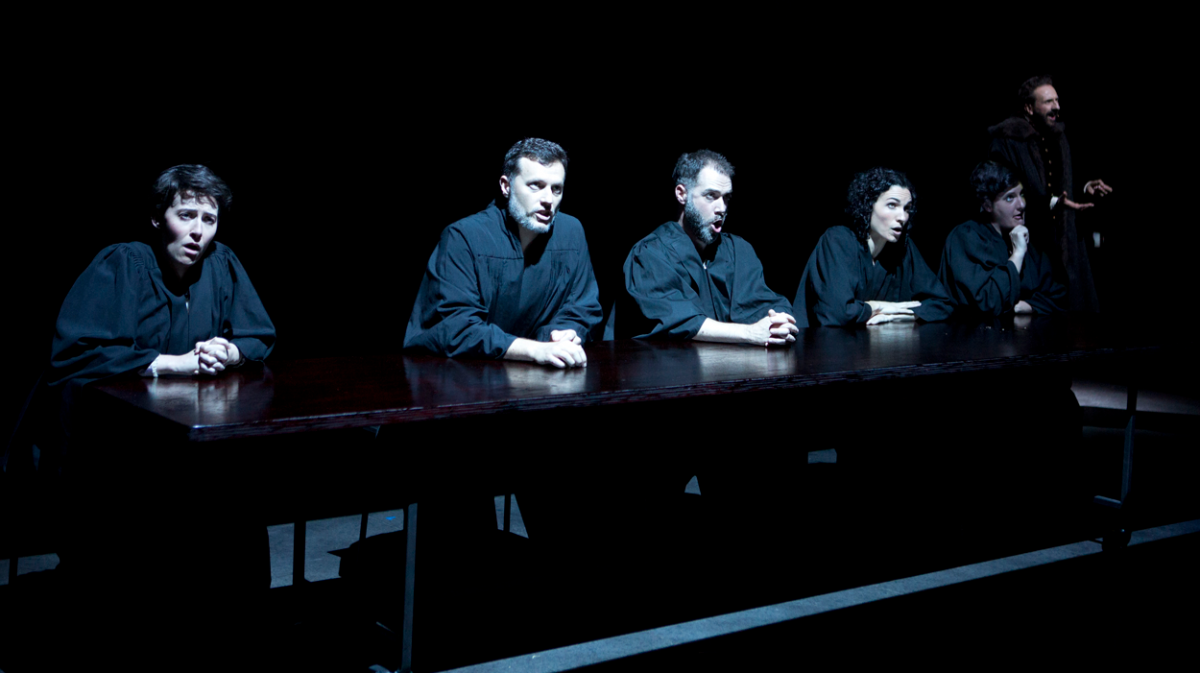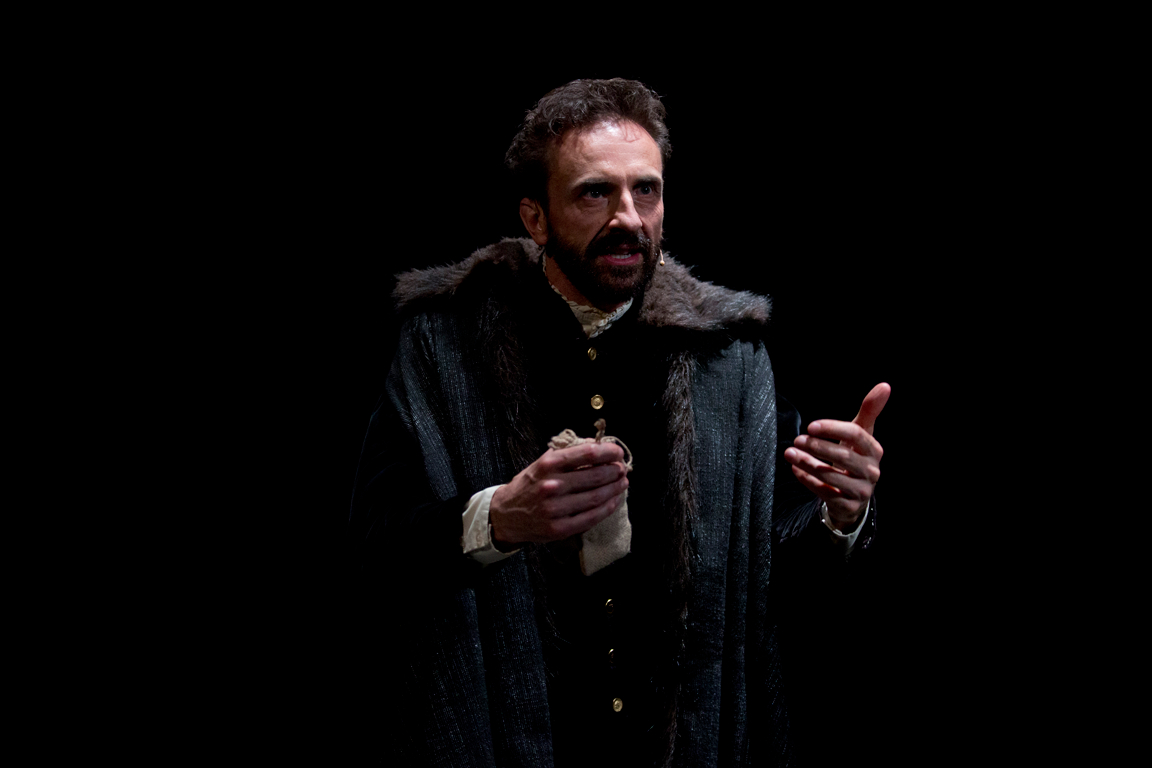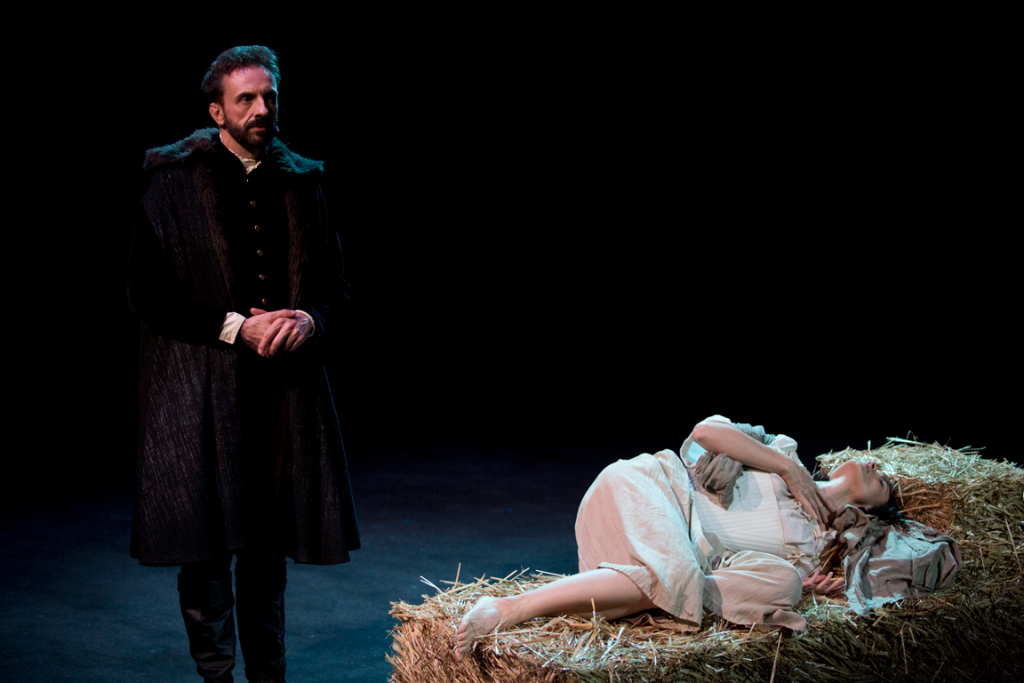Brought to life
Biographica fuses renaissance with modern
by Annarosa Berman
Mary Finsterer and Tom Wright’s new chamber opera, Biographica, staged by Sydney Chamber Opera as part of the 2017 Sydney Festival, grew from an idea that took more that seventeen years to germinate. Fascinated by ancient history and mythology, Finsterer had long been playing with the idea of an opera based on the concept of the ancient Greek practice of palaestra, or wrestling, which can also be a wrestling of thoughts and ideas. What she needed was a story on which to hang the idea.
“The question was, what were we going to see on stage?” she says, when we speak for this article. In the library one day, she came across a book about Gerolamo Cardano, an eccentric renaissance genius who wrote the first texts on the mathematics of gambling and cheating. He was also a world-renowned surgeon and a pioneer of sign language. He revolutionised complex numbers and, having lived in a time where the line between science and mysticism was frequently blurred, drew upon both to seek an understanding to life and immortality. “Cardano’s life provided a vehicle for a story about thoughts, wrestling and debating,” Finsterer says.
Matthew Lutton, the creative consultant for Biographica, introduced the composer to librettist Tom Wright, who immediately grasped the concept of an opera built on the premise of ideas wrestling with each other and personified in the life of Gerolamo Cardano. Finsterer, Lutton and Wright workshopped the concept, and concluded that the story needed to be told as a series of contrasting portraits, rather than as a linear history. “The portraits are juxtaposed to create a sense of ideas colliding,” Finsterer says, “Placing them like one would in a gallery, reflects the idea that a life comprises many and often conflicting elements.”
“Cardano’s life provided a vehicle for a story about thoughts, wrestling and debating,” Finsterer says.
The Song Company, under the direction of Roland Peelman, performed some of the early material, but it was clear that staging the completed work would need the multi-faceted resources of an opera company. In 2012 some of the material was presented at Melbourne’s NOVA, an initiative established by Victorian Opera and Chamber Made Opera. It was here that former Sydney Festival director Lieven Bertels offered his support. His successor, Wesley Enoch, made the decision to include Biographica in the 2017 Sydney Festival with Sydney Chamber Opera and Ensemble Offspring. Having received this support, a search was undertaken to find a director, not only with the depth of experience required to work quickly to bring all the elements together, but someone with a bold vision capable of creating a visually arresting design to match the lushness and confidence of the music. This resulted in the appointment of Janice Muller.

Finsterer’s interest in renaissance and baroque music contrasts with her well established practice in the modernist aesthetic. “I respond to the particular requirements of the project at hand. I don’t like being restricted by a particular style”, she remarks. Finsterer’s ability to adapt her technique to diverse circumstances has not gone unnoticed by prominent musicologist Richard Toop, who once said of her work, “Like Stravinsky before her, Mary Finsterer has a remarkable capacity to adjust the basic characteristics of her music to very different circumstances, without any sense of compromise.”
In Biographica, her aim was to capture an essence of renaissance music by filtering it through a contemporary lens. Thus, the music is built on harmony made from 3-note chords. “I use this tertian harmony as the basic building block, but in ordering that elemental material, I draw from serialism to assist me with chord progressions and voice–leading. I’m interested in finding ways to take the listeners to places that are perhaps unexpected or even surprising”, Finsterer explains.
Admirers of Finsterer’s music might think that her compositional style has changed in this work. But she says, “The material is derived from the Renaissance, yet the method by which it’s constructed draws from the modernist aesthetic. I wanted to bring the two worlds together. I realise that the outer layers of the music are quite different but I don’t feel that I’m writing very different music at all.”
In writing an opera, a big part of attending to the task at hand is to write vocal lines to which opera singers can feel a connection. “In opera it’s very important to have clean, clear vocal lines,” Finsterer says. “In Biographica, because the harmony stems from the tertian system, extracting material to support the vocal lines is an enjoyable part of the process.”
To some it might come as a surprise to learn that Finsterer had been working on Biographica for almost two decades. She says, “It’s been part of my life for a long time; but it’s not as if I’ve been working on it constantly. I like having a large–scale piece in the background while I’m working on other projects. This enables me to compose many works, drawing on the same research.”
Will she be writing for the theatre in future? Fortunately, yes. “I feel that Biographica has initiated ideas for more opera,” she says.
Keep in touch
General Inquiries
- contact@sydneychamberopera.com
-
SCO, Carriageworks
PO Box 3035 Redfern, NSW 2016
Postal Address -
SCO, Carriageworks
245 Wilson St Eveleigh, NSW 2015
Resident Address - (02) 8571 9106


